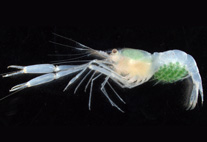Abstract
The type of the only species of the order Sphaerotheriida with a record in Nepal, Kophosphaera excavata (Butler, 1874), originally described from Sikkim, is redescribed. The subspecies K. excavata mammifera Attems, 1936 from Sureil, Darjeeling, India, is elevated to species rank, K. mammifera stat. nov.. A species of unclear country of origin ('Himalaya'), Sphaeropoeus montanus Karsch, 1881, is briefly redescribed and transferred to the genus Zephronia, Z. montana (Karsch, 1881) n. comb.. Z. tumida Butler, 1882, an apparently widespread north Indian Zephronia species, is redescribed. Sphaerotheriida specimens collected during several expeditions to Nepal undertaken by Prof. J. Martens in the 1970s and 1980s were examined. The material contained 10 specimens (7 males, 3 females) from seven localities, including three undescribed species, Zephronia nepalensis n. sp., Kophosphaera shivapuri n. sp., and Kophosphaera martensi n. sp., as well as a specimen of Kophosphaera politissima Attems, 1935, type species of the genus and described previously from India. A key to all (now seven) species of Kophosphaera is presented. A brief diagnosis of the Kophosphaera excavata group is provided. While Zephronia seems to be restricted to the eastern part of Nepal, two endemic and two more widespread Kophosphaera species occur also in its central and mid-western part, representing the western-most records of the family Zephroniidae in Asia. The current distribution of the family in Nepal clearly indicates the Zephroniidae as a family adapted to tropical environments.

